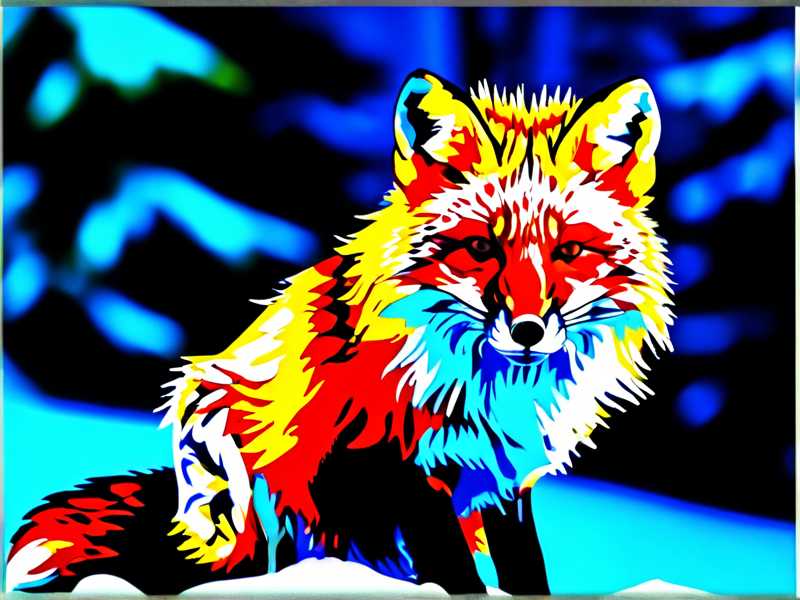1.1 Definition and Taxonomy
Hey there! Let me introduce you to the blue fox, also known as the Arctic fox (Vulpes lagopus). This little guy is a small mammal that calls the Arctic regions of the Northern Hemisphere home. Now, when we talk about the "blue fox," we're referring to a specific color phase of the Arctic fox where its coat stays a stunning blue-gray during the winter months. It's quite a sight to see! The blue fox is not just any fox; it's considered more valuable than the white fox due to the superior quality of its fur. In the fur trade, blue fox fur is ranked among the noble fox furs, like silver fox fur and Arctic fox fur. It's a real standout in the world of fur.
1.2 Geographic Distribution and Habitat
When it comes to where you can find the blue fox, it's all about the Arctic coastal areas. These foxes are mainly found around the coastal regions of Greenland, Iceland, and Fennoscandia. Their fur coat is perfectly adapted to blend in with the rocky cliffs of these areas, which is a pretty neat survival trick. It's not just about looking good; it's about survival in one of the harshest environments on Earth.
1.3 Rarity and Population Statistics
Now, here's something that might surprise you: the blue fox is rarer than the white Arctic fox. In fact, they make up only about 1% of the total Arctic fox population. That's a pretty exclusive club to be in! Their rarity adds to the value of their fur, making it even more sought after in the fur trade. It's not just about the numbers; it's about the unique characteristics that set the blue fox apart from the rest.

2.1 Description of Blue Fox Fur
2.1.1 Winter Coat Color and Texture
Let's dive into the details of what makes blue fox fur so special. During the winter, the blue fox's coat is a sight to behold. It's not just any blue; it's a rich, blue-gray that's as stunning as it is functional. The texture is incredibly soft and silky, which is why it's so highly prized. Imagine running your hands through the fur – it's like touching a cloud. The fur's color can vary from blue-brown to lightest café au lait, and even to light blue-grey and deep dark brown. Sometimes, it's almost black with hints of rusty red and loamy-dirty, and occasionally, there are silver hairs that add a touch of elegance.
2.1.2 Summer Coat Characteristics
When summer rolls around, the blue fox's coat takes on a different look. It turns into a dark black-brown, which is usually slightly browner than its winter coat. This change in color is a brilliant adaptation to the changing seasons, allowing the fox to blend in with its environment whether it's snowy white or rocky brown.
2.2 Fur Trade Value and Classification
2.2.1 Comparison with Other Noble Fox Furs
In the fur trade, blue fox fur is considered one of the noble fox furs, alongside silver fox fur and Arctic fox fur. It's not just about the color; it's the quality that sets it apart. Blue fox fur is known for its length and silkiness, which makes it highly desirable. When you compare it to other noble furs, the blue fox fur stands out for its unique color and texture, making it a favorite among fur enthusiasts and fashion designers alike.
2.2.2 Size and Length of Pelts
The size of a blue fox pelt is another factor that contributes to its value. Pelts from wild-caught blue foxes are around 50 to 65 cm long, with tails that are 25 to 35 cm long. This size is perfect for creating luxurious fur garments that are both warm and stylish. The length of the fur and the size of the pelt make it a sought-after material in the fur trade, adding to its overall value and appeal.
2.3 Economic and Cultural Importance
2.3.1 Fur Quality and Desirability
The quality of blue fox fur is what makes it so desirable. It's not just about the color; it's the softness, the silkiness, and the warmth that the fur provides. This has made it a popular choice for high-end fashion and luxury items. The demand for blue fox fur drives its economic value, making it a significant contributor to the fur trade industry.
2.3.2 Impact on Blue Fox Population
The high demand for blue fox fur also has an impact on the population of these beautiful creatures. As they are already rare, making up only about 1% of the total Arctic fox population, the pressure from the fur trade can be a challenge. It's important to balance the economic benefits of the fur trade with the need to conserve and protect the blue fox population. This delicate balance is crucial to ensure that the blue fox continues to thrive in its natural habitat while still benefiting from the value its fur brings to the market.

发表评论
◎欢迎参与讨论,请在这里发表您的看法、交流您的观点。